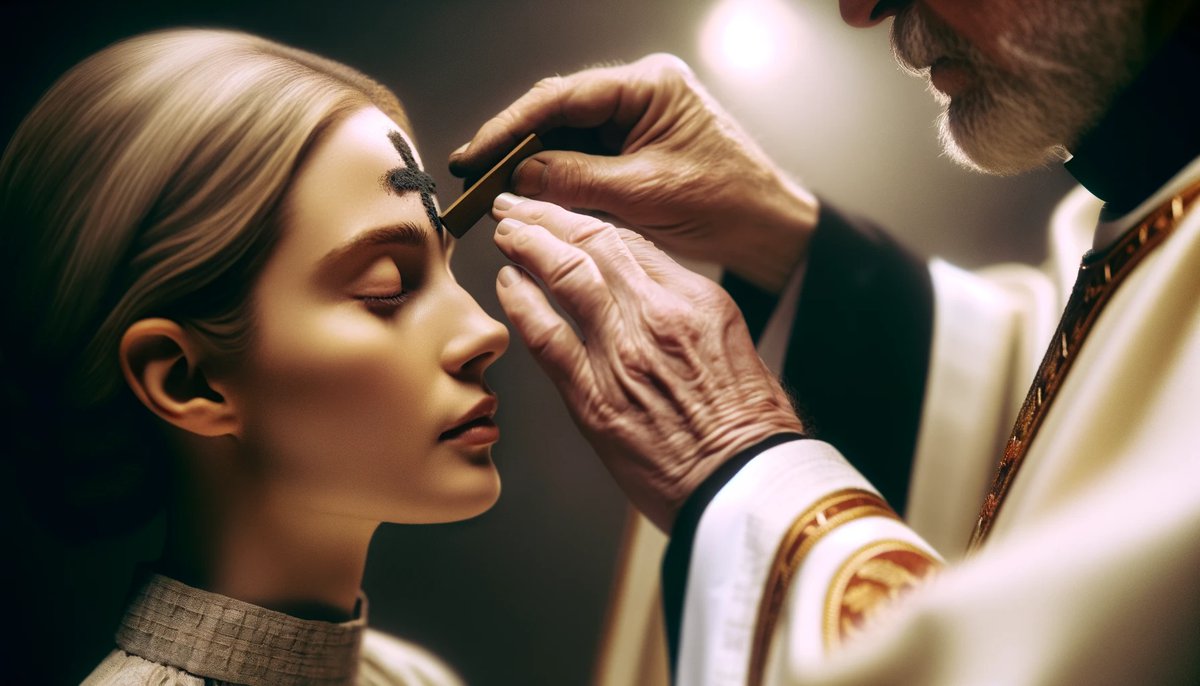Home>Arts and Culture>The Significance Of Giovanni Pisano’s Signature On The Pisa Cathedral Pulpit


Arts and Culture
The Significance Of Giovanni Pisano’s Signature On The Pisa Cathedral Pulpit
Published: February 16, 2024
Jason DeRose, Managing Editor at Christian.net, uses his expertise in religion and journalism to deepen understanding of faith's societal impacts. His editorial leadership, coupled with a strong academic background, enriches the platform’s diverse content, earning him recognition in both journalism and religious circles.
Discover the artistic significance of Giovanni Pisano's signature on the Pisa Cathedral pulpit, exploring its impact on arts and culture. Uncover the historical and cultural implications of this iconic masterpiece.
(Many of the links in this article redirect to a specific reviewed product. Your purchase of these products through affiliate links helps to generate commission for Christian.net, at no extra cost. Learn more)
Table of Contents
Introduction
The world of art and culture is a treasure trove of history, creativity, and human expression. It is a realm where the past and present converge, allowing us to glimpse into the minds and hearts of artists who have left an indelible mark on the world. One such luminary figure is Giovanni Pisano, an Italian sculptor whose legacy continues to captivate art enthusiasts and historians alike.
In this article, we will embark on a captivating journey through the annals of art history to explore the significance of Giovanni Pisano's signature on the Pisa Cathedral Pulpit. This exploration will unveil the profound impact of Pisano's work on the artistic landscape of his time and beyond, shedding light on the intricate interplay between artistic expression, cultural heritage, and the enduring legacy of a master craftsman.
Giovanni Pisano's signature, etched into the intricate design of the Pisa Cathedral Pulpit, serves as a poignant testament to his artistry and the profound influence he wielded during the Italian Gothic period. By delving into the life and works of this revered sculptor, we will unravel the rich tapestry of artistic innovation and cultural significance that defines his contribution to the world of art.
Join us as we embark on a captivating odyssey through the corridors of time, where the chisel strokes of Giovanni Pisano come to life, resonating with the echoes of centuries past and inviting us to ponder the enduring allure of artistic mastery. Let us unravel the enigma of Pisano's signature and discover the profound narrative it weaves within the intricate fabric of art history.
Giovanni Pisano: A Brief Biography
Giovanni Pisano, a luminary of the Italian Gothic period, was born in 1250 in Pisa, Italy. He hailed from a family of esteemed sculptors, with his father, Nicola Pisano, being a renowned figure in the realm of medieval art. Under the tutelage of his father, Giovanni Pisano honed his artistic skills from a young age, imbibing the essence of classical artistry and imbuing his work with a profound sense of creativity and innovation.
Pisano's artistic journey was marked by a fervent passion for sculpting, and his innate talent soon garnered widespread acclaim. His artistic prowess transcended the conventional norms of his era, ushering in a new wave of expressive and emotive sculptural forms that left an indelible mark on the artistic landscape of Italy.
One of the defining moments in Pisano's career came when he was commissioned to create the Pisa Cathedral Pulpit, a masterpiece that would come to epitomize his unparalleled skill and visionary approach to sculpting. The pulpit, adorned with intricate reliefs and ornate detailing, stands as a testament to Pisano's ability to infuse his creations with a sense of dynamism and emotional depth, setting a new standard for sculptural artistry.
Pisano's artistic vision was not confined to the realms of sculpting alone. His multifaceted talents encompassed architecture and painting, reflecting a holistic approach to artistic expression that transcended traditional boundaries. His innovative spirit and unwavering dedication to his craft positioned him as a trailblazer in the realm of Italian art, earning him a revered status among his contemporaries and future generations of artists.
As we delve into the life and works of Giovanni Pisano, we are invited to witness the unfolding of a remarkable artistic odyssey—one that embodies the spirit of creativity, resilience, and unwavering commitment to artistic excellence. Pisano's legacy endures as a testament to the enduring power of art to transcend time and resonate with the human spirit, leaving an indelible imprint on the annals of art history.
The Pisa Cathedral Pulpit
The Pisa Cathedral Pulpit stands as a crowning achievement of Giovanni Pisano's artistic prowess, a testament to his unparalleled skill and visionary approach to sculpting. Commissioned in 1302 and completed in 1310, this masterpiece represents a pivotal moment in the evolution of sculptural artistry during the Italian Gothic period.
Crafted from intricately carved marble, the pulpit embodies a harmonious fusion of architectural grandeur and sculptural finesse. Its octagonal structure, adorned with a profusion of ornate reliefs and sculpted figures, exudes a sense of grandeur and spiritual reverence. Each facet of the pulpit serves as a canvas for Pisano's masterful storytelling, depicting scenes from the life of Christ, allegorical representations, and symbolic motifs that resonate with profound emotive depth.
The reliefs adorning the pulpit are a testament to Pisano's ability to infuse his creations with a sense of dynamism and emotional resonance. Figures come to life with a palpable sense of movement and expression, their forms imbued with a profound sense of vitality and narrative depth. The intricate detailing and nuanced sculpting techniques employed by Pisano elevate the pulpit to a realm of artistic transcendence, inviting viewers to immerse themselves in a rich tapestry of visual storytelling.
One of the most striking features of the pulpit is the seamless integration of classical motifs and innovative artistic expression. Pisano's sculptural vision transcends the conventional norms of his era, ushering in a new wave of expressive and emotive sculptural forms that left an indelible mark on the artistic landscape of Italy. The pulpit stands as a testament to Pisano's unwavering commitment to pushing the boundaries of artistic innovation, setting a new standard for sculptural artistry that would resonate for centuries to come.
As visitors stand in awe of the Pisa Cathedral Pulpit, they are beckoned to embark on a visual journey through the annals of biblical narratives and allegorical symbolism. Each sculpted figure, each intricately carved detail, serves as a testament to Pisano's ability to transcend the confines of marble and breathe life into his creations. The pulpit stands as a timeless testament to the enduring power of art to transcend time and resonate with the human spirit, leaving an indelible imprint on the annals of art history.
The Significance of Giovanni Pisano's Signature
Giovanni Pisano's signature, etched into the intricate design of the Pisa Cathedral Pulpit, holds profound significance in the realm of art history. Beyond being a mere mark of authorship, Pisano's signature serves as a poignant testament to his artistry, vision, and enduring legacy. The act of inscribing his name onto the pulpit was a deliberate declaration of artistic ownership and a testament to his unwavering commitment to his craft.
Pisano's signature transcends the realm of mere identification; it embodies a profound sense of artistic pride and authorial ownership. In an era where the role of the artist was often overshadowed by the patron or the overarching narrative of religious or civic institutions, Pisano's decision to inscribe his name onto the pulpit was a bold assertion of his creative autonomy and artistic individuality. It symbolizes a departure from the anonymity that often shrouded artists of his time, elevating Pisano to the status of a master craftsman whose work bore the indelible mark of his personal imprint.
Furthermore, Pisano's signature serves as a testament to the enduring bond between the artist and his creation. By inscribing his name onto the pulpit, Pisano forged an intimate connection with his masterpiece, imbuing it with a sense of personal investment and artistic stewardship. This act of authorial assertion not only solidified Pisano's place in the annals of art history but also bestowed upon the pulpit a sense of individuality and artistic integrity that transcended the confines of its physical form.
From a historical perspective, Pisano's signature on the Pisa Cathedral Pulpit serves as a pivotal marker in the evolution of artistic authorship and the recognition of artists as visionary creators. It signifies a shift towards acknowledging the artist as a central figure in the narrative of artistic production, laying the groundwork for the elevation of artists to the status of revered maestros whose names would echo through the corridors of time.
In essence, Giovanni Pisano's signature on the Pisa Cathedral Pulpit encapsulates the essence of artistic autonomy, creative ownership, and the enduring legacy of a master craftsman. It stands as a testament to the profound bond between the artist and his creation, transcending the confines of time to resonate with the enduring allure of artistic mastery.
The Impact of the Signature on Art History
Giovanni Pisano's decision to inscribe his signature onto the Pisa Cathedral Pulpit reverberated far beyond the confines of the Italian Gothic period, leaving an indelible mark on the trajectory of art history. The act of affixing his name to this masterpiece heralded a paradigm shift in the perception of artistic authorship and the recognition of artists as visionary creators. This pivotal moment in art history laid the groundwork for the elevation of artists to the status of revered maestros whose names would echo through the corridors of time.
Pisano's signature served as a catalyst for the recognition of artists as individual creators with a distinct voice and artistic identity. It marked a departure from the anonymity that often shrouded artists of his time, granting them a newfound sense of agency and creative autonomy. The act of inscribing his name onto the pulpit was a bold assertion of his artistic individuality, solidifying his place in the annals of art history and bestowing upon the pulpit a sense of individuality and artistic integrity that transcended the confines of its physical form.
Furthermore, Pisano's signature on the Pisa Cathedral Pulpit symbolized a profound shift in the dynamics of artistic patronage and recognition. It underscored the pivotal role of the artist as a central figure in the narrative of artistic production, challenging the prevailing notion that artists were mere conduits for the visions of their patrons. This shift in perception laid the foundation for the emancipation of artists from the constraints of traditional patronage, empowering them to assert their creative vision and leave an enduring imprint on the artistic landscape.
From a broader historical perspective, Pisano's signature on the pulpit served as a harbinger of the Renaissance spirit that would come to define the subsequent era. It foreshadowed the burgeoning emphasis on individual creativity, artistic innovation, and the celebration of the artist as a visionary trailblazer. Pisano's bold assertion of authorial ownership paved the way for future generations of artists to stake their claim to their creations, ushering in an era where the artist's signature would become synonymous with artistic mastery and creative stewardship.
In essence, Giovanni Pisano's signature on the Pisa Cathedral Pulpit transcended the confines of its physical inscription, resonating with the enduring allure of artistic mastery and leaving an indelible imprint on the annals of art history. It stands as a testament to the enduring legacy of a master craftsman and a pivotal moment in the evolution of artistic authorship, heralding a new era where artists would be celebrated as visionary creators whose names would be revered for generations to come.
Read more: What Is The Significance Of Lent?
Conclusion
In the intricate interplay between artistic expression, cultural heritage, and the enduring legacy of a master craftsman, Giovanni Pisano's signature on the Pisa Cathedral Pulpit emerges as a poignant testament to the profound impact of artistic autonomy and creative stewardship. As we traverse the annals of art history, Pisano's bold assertion of authorial ownership reverberates as a pivotal moment in the evolution of artistic authorship, heralding a new era where artists would be celebrated as visionary creators whose names would be revered for generations to come.
The journey through the life and works of Giovanni Pisano unveils a rich tapestry of artistic innovation, resilience, and unwavering commitment to artistic excellence. His legacy endures as a testament to the enduring power of art to transcend time and resonate with the human spirit, leaving an indelible imprint on the annals of art history. The Pisa Cathedral Pulpit, a crowning achievement of Pisano's artistic prowess, stands as a timeless testament to the enduring allure of artistic mastery, inviting us to ponder the profound narrative it weaves within the intricate fabric of art history.
Pisano's decision to inscribe his name onto the pulpit was a deliberate declaration of artistic ownership and a testament to his unwavering commitment to his craft. It symbolizes a departure from the anonymity that often shrouded artists of his time, elevating Pisano to the status of a master craftsman whose work bore the indelible mark of his personal imprint. This act of authorial assertion not only solidified Pisano's place in the annals of art history but also bestowed upon the pulpit a sense of individuality and artistic integrity that transcended the confines of its physical form.
Furthermore, Pisano's signature on the Pisa Cathedral Pulpit served as a harbinger of the Renaissance spirit that would come to define the subsequent era. It foreshadowed the burgeoning emphasis on individual creativity, artistic innovation, and the celebration of the artist as a visionary trailblazer. Pisano's bold assertion of authorial ownership paved the way for future generations of artists to stake their claim to their creations, ushering in an era where the artist's signature would become synonymous with artistic mastery and creative stewardship.
In essence, Giovanni Pisano's signature on the Pisa Cathedral Pulpit transcended the confines of its physical inscription, resonating with the enduring allure of artistic mastery and leaving an indelible imprint on the annals of art history. It stands as a testament to the enduring legacy of a master craftsman and a pivotal moment in the evolution of artistic authorship, heralding a new era where artists would be celebrated as visionary creators whose names would be revered for generations to come.














